There's a cabinet against a wall at Art Sites that marks the divide between the contemporary art gallery and the architecture firm, Studio a/b. The married pair of architects, Hideaki Ariizumi and Glynis M. Berry, head both. Each of the cabinet's four shelves holds a single cast bronze sculpture. On top of the cabinet is a single sculpture of blown glass swaddled with mesh bands.
.
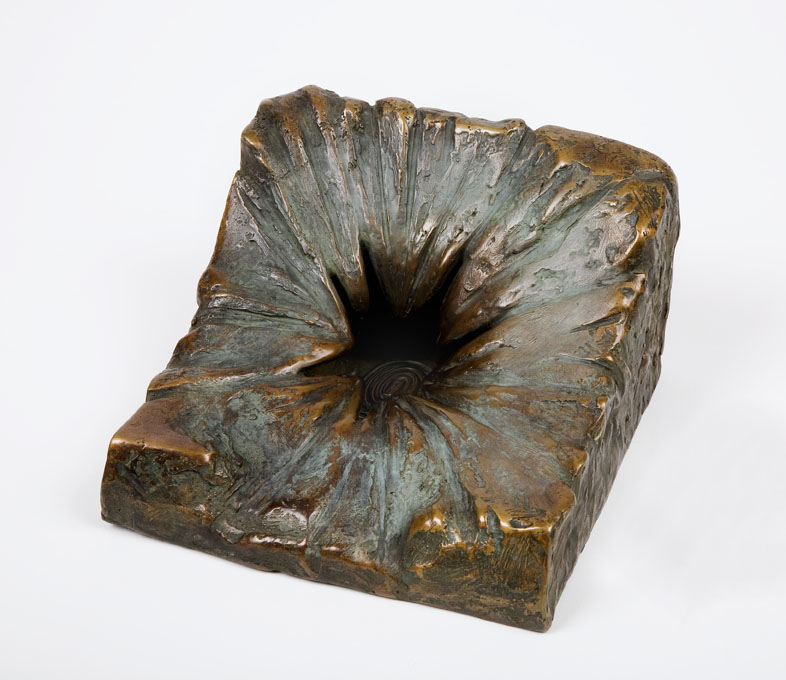
"Panoias Serapis" by Marianne Weil, 2010. Cast Bronze, 8 x 8 x 5 inches. Courtesy of the artist and Kouros Gallery, NYC.
.
The bronze sculptures are patinaed, marked to create motion and draw viewers into portals leading inside the art. The glass work is lyrical and curious with subtle color and surface textures that beckon viewers to draw closer.
All of the art is the work of sculptor Marianne Weil. Paralleling their placement on the cabinet, bronze is the anchor of Weil's art; blown glass entwined with metals is her current focus and the medium for her newest series.
In 2010, Weil received the PSC-CUNY Research Foundation Award for a project to study the fusion of glass and bronze. She applied for the grant to pursue a new artistic direction so she could keep pushing herself forward as an artist, she said.
Weil is now nearing the end of a year-long journey in exploring how blown glass and poured bronze can meet and marry in art. A recent group show at Art Sites was the first presentation of glass work, so far. Showing Weil's first series with a new medium was a no-brainer, said Berry.
"Even though it's a new medium, she brings a connection from the work she was doing previously," Berry said. "She [Weil] has always been interested in transparency. The hole in the bronze and the form that she's developing with the glass allows her to push the envelope even more."
.
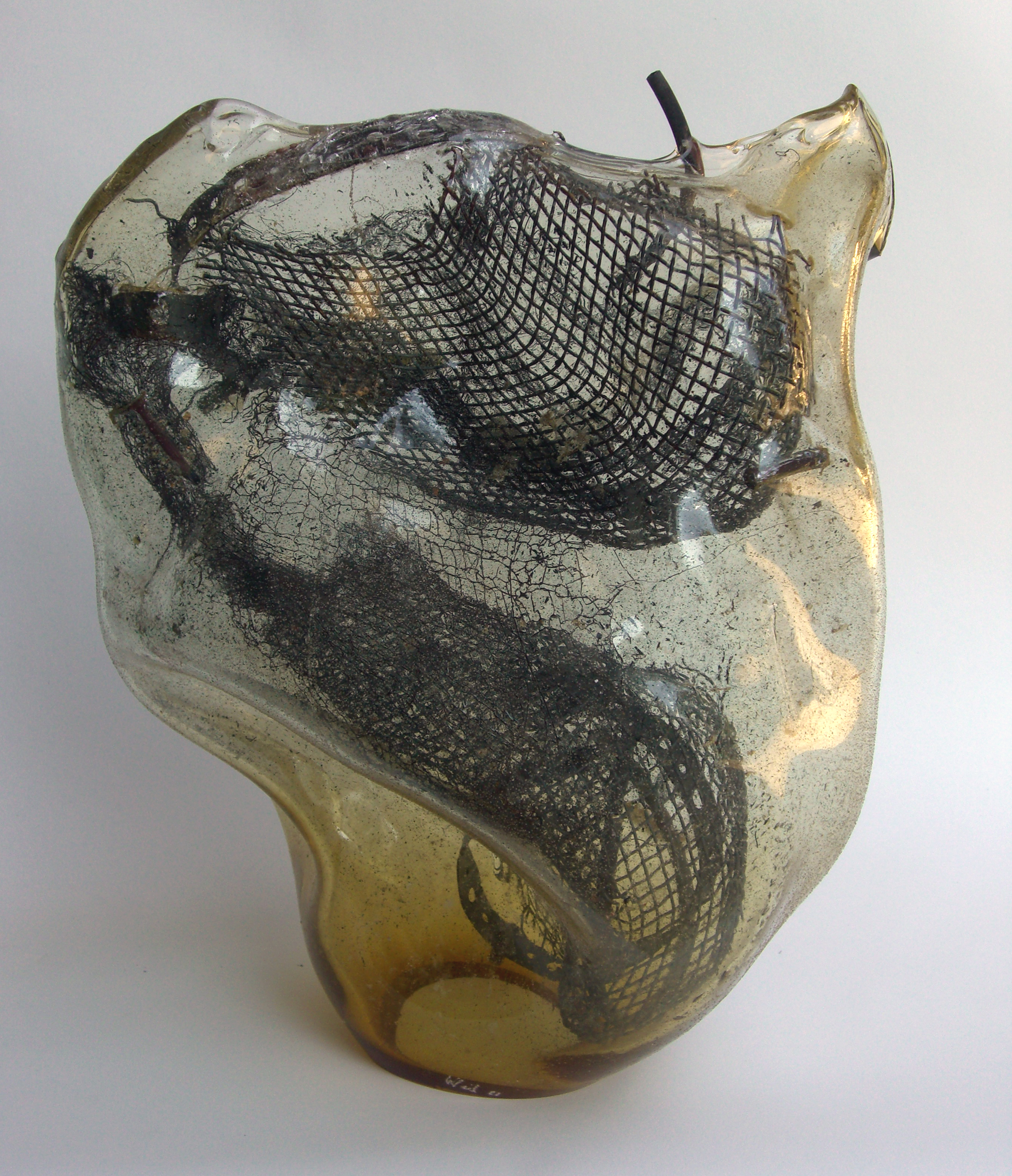
"Moby" by Marianne Weil, 2011. Blown glass with copper & bronze, 16 x 14 x 9 inches. Courtesy of the artist and Art Sites.
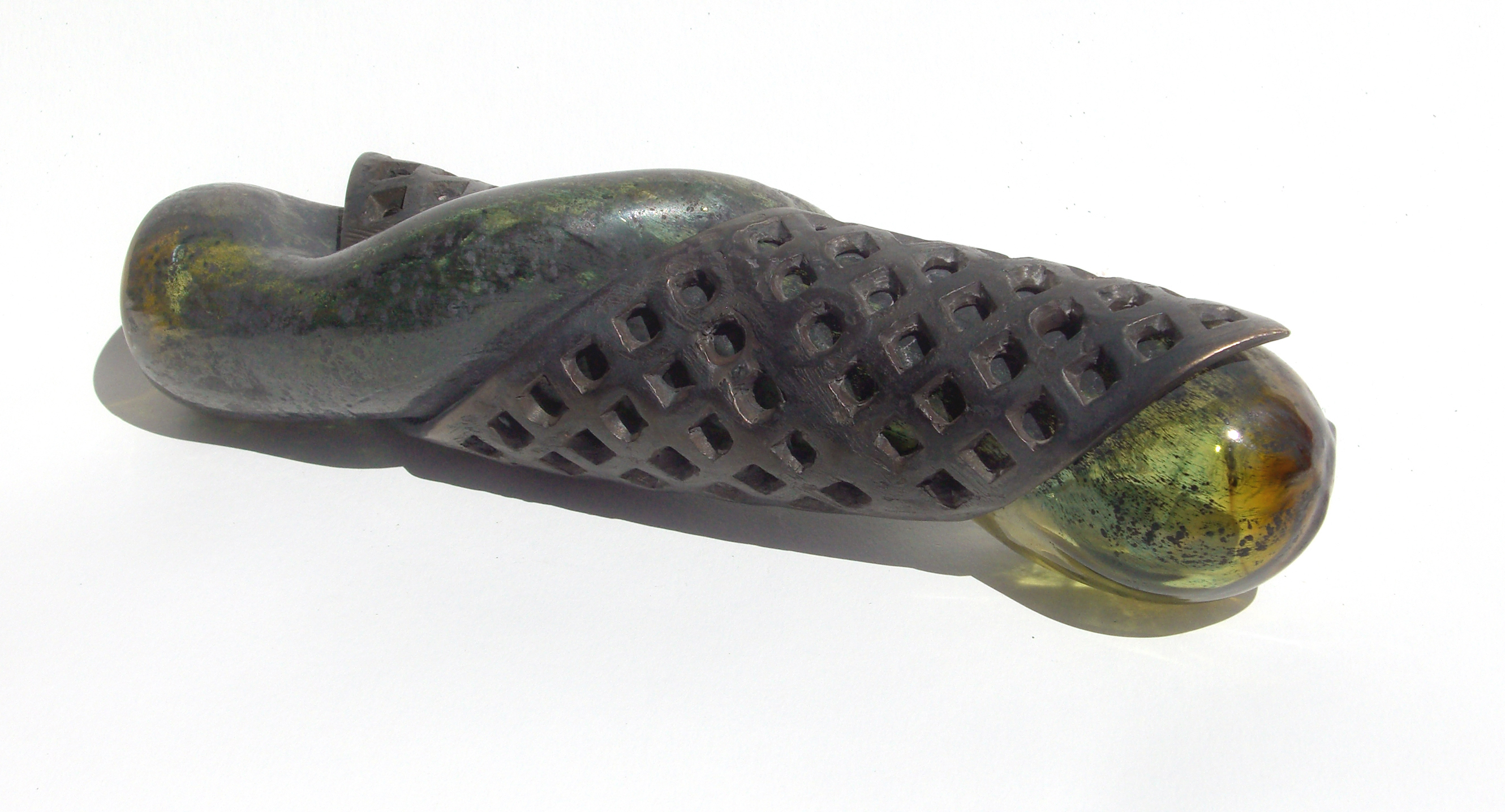
"Twist" by Marianne Weil, 2011. Blown glass & cast iron, 11 x 3 x 3 inches. Courtesy of the artist and Art Sites.
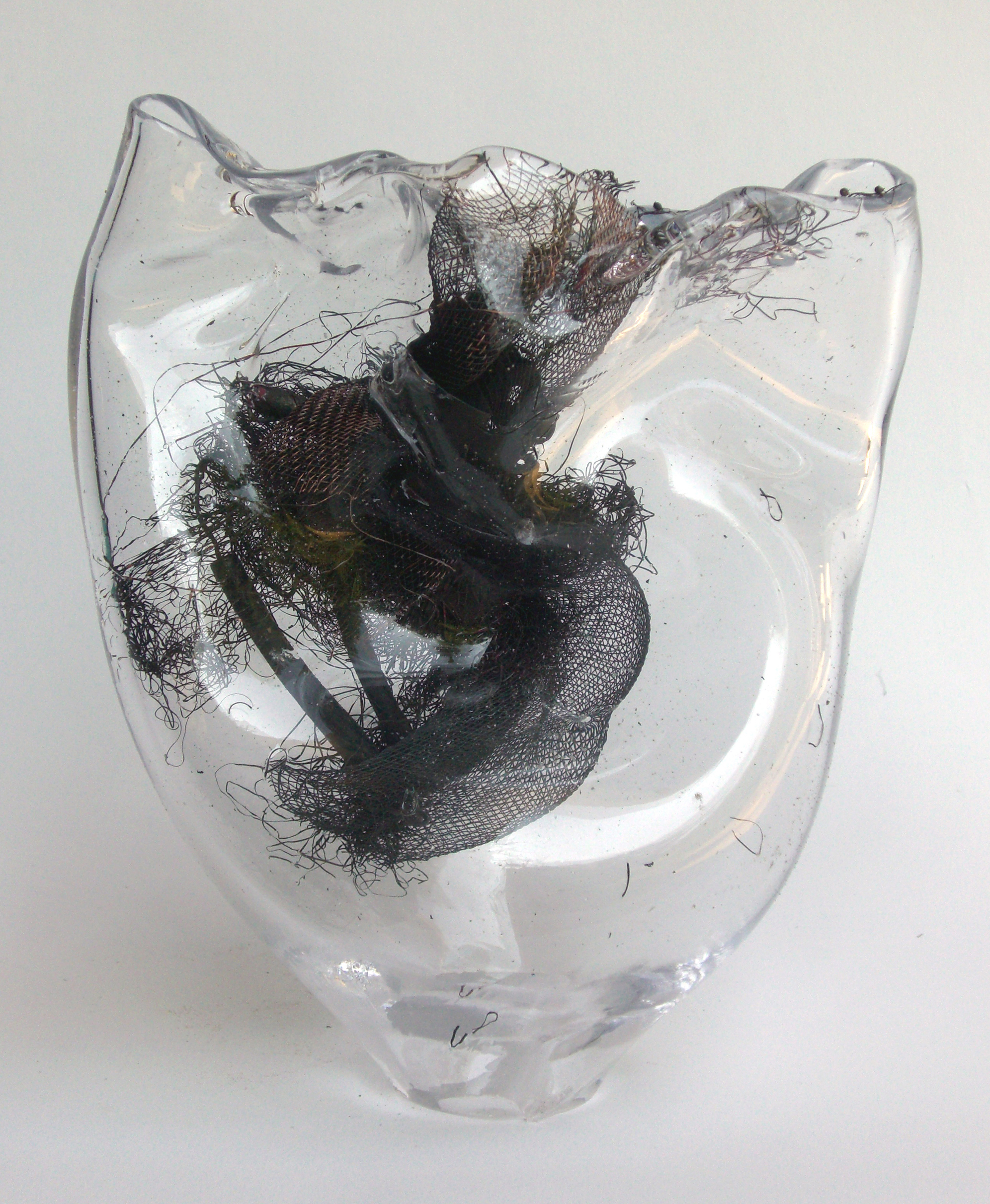
"Chiaro Cuore" by Marianne Weil, 2011. Blown glass with copper & bronze, 9 x 8 x 4 inches. Courtesy of the artist and Art Sites.
.
Rediscovering blown glass and winning a grant to help her reach towards mastery is a privilege, Weil said. It's especially unusual for established artists who are masters of one type of material to being anew with another, she said.
"There's not too many established artists who get the chance to reinvent themselves," she said. "It is really fortunate to be able to do this exploration at this point in my career."
Even though blown glass is a new frontier to conquer, there's enough similarity between the lost-wax casting process for pouring bronze and blowing glass. "I have a lot to learn but I'm not starting at Square One," she said.
Weil's attraction to stone solidified as an undergraduate at Goddard College, where she apprenticed with Italian stone carvers in Barre, VT. After graduating, she training for eight years in Pietrasanta, Italy, in the lost-wax casting process and carving marble. Weil then returned to New York and began a dual career as a cast bronze sculptor and college professor of sculpture. She has an MFA from the School of Visual Arts.
Weil's continued to learn and push her art through artist residencies. A residency in the south coast of Spain was especially influential. Spending time at Los Millares, a Chalcolithic settlement over five millenia old, gave Weil the chance to commune with ancient sites and be influenced by the experience which she infuses in her art.
.
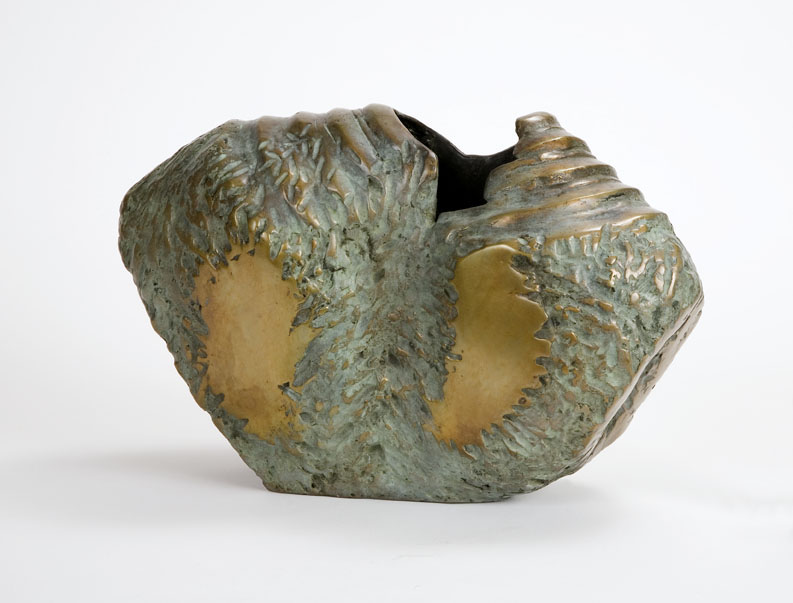
"Feixo de Namao" by Marianne Weil, 2009. Cast bronze, 14 x 7 x 9 inches. Courtesy of the artist and Kouros Gallery, NYC.
.
To make the bronze sculptures, Weil pours wax to create thin sheets and builds hollow forms which will become sculpture. Working with wax means that molds aren't necessary. This means, she only makes one artwork at a time and doesn't make multiples, like many artists working in cast bronze.
Weil's bronzes are abstract and organic. There's a sense that the sculpture could have been unearthed from a civilization long gone and its discovery will rekindle ancient knowledge now forgotten.
The hand of the artist is present in every work. Textured surfaces can be found inside the form and out. Nature, spirituality and a bit of the unexpected are all part of Weil's art.
.

"Los Millares" by Marianne Weil, ed 6, 2008. Cast Bronze, 32 x 13 x 6 inches. Courtesy of the artist and Kouros Gallery in NYC.
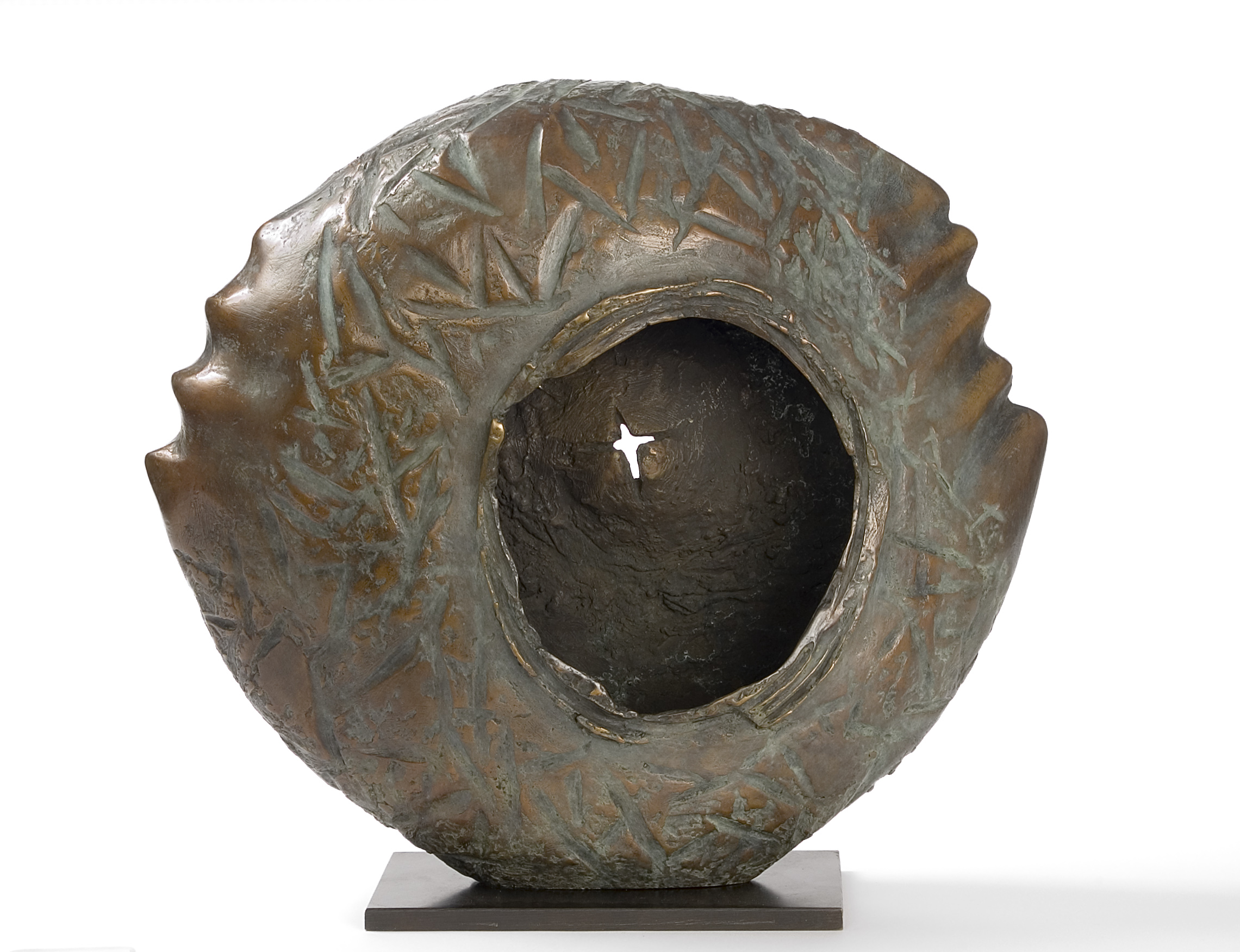
"Roundhouse" by Marianne Weil, 2006. Cast bronze, 17 x 14 x 5 inches. Courtesy of the artist and Kouros Gallery in NYC.
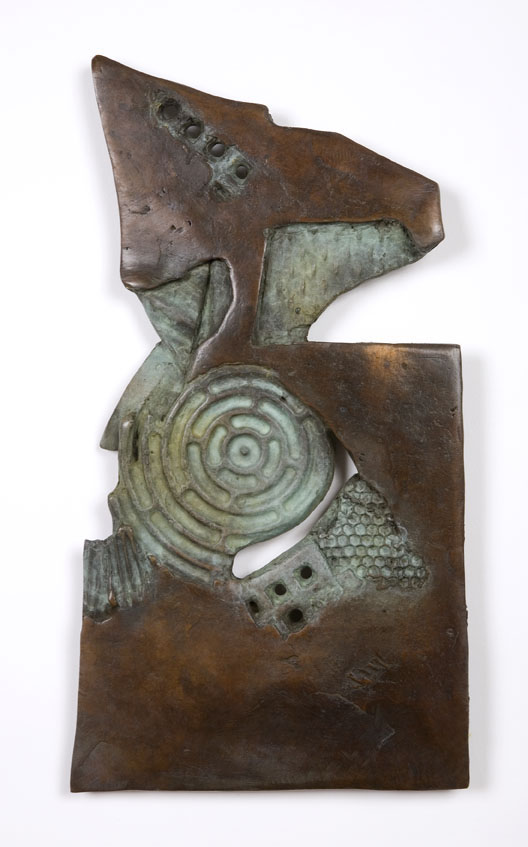
"Volans I" by Marianne Weil, 2009. Cast bronze, 13 x 7 x 1/2 inches. Courtesy of the artist and Kouros Gallery in NYC.
.
Weil's also attracted to bronze because of the tension between strength and fragility and the way the material changes in the process. Those same qualities also draws Weil toward blown glass. The importance she places on texture carries through in her blown glass work. Surfaces can be mottled, scarred or punctured to distinguish Weil's blown glass from commerically-processed surfaces. If the glass is left clear and shiny, it's because of the contrast it makes to the rest of the art.

"Hourglass" by Marianne Weill, 2011. Blown glass with copper & bronze, 17 x 3 x 4 inches. Courtesy of the artist and Art Sites.
So far, Weil has discovered multiple ways to mix materials that don't seem like they should go together. Glass can be blown into a bronze form, as in the work "Twist." Or, materials like iron mesh can be inserted into a warm glass form so it's attached to the inside of malleable glass. Glass and bronze can be formed around a stand mount. Her exploration will continue through December 2011 when the grant concludes.
Learning a new multi-step process has its share of challenges, Weil said. Glass shatters or melts into unusable shapes; sculptural forms fall short of expectations and glitches can occur without warning.
Sometimes it's not the artwork that's the prize, Weil said, but discovering how to improve techniques to make the next sculpture.
Having the glass sculptures accepted into Art Site's group show was a boon. It's not often a series with a brand new medium for the artist is presented in a gallery show, Weil said.
When asked, Berry said she's a longtime fan of Weil's work and liked what she saw of the glass sculptures. Already, the new forms bear the mark of a master.
"I was impressed by the intelligence of the work and, at the same time, how she's using a new medium as her own," said Berry.
.
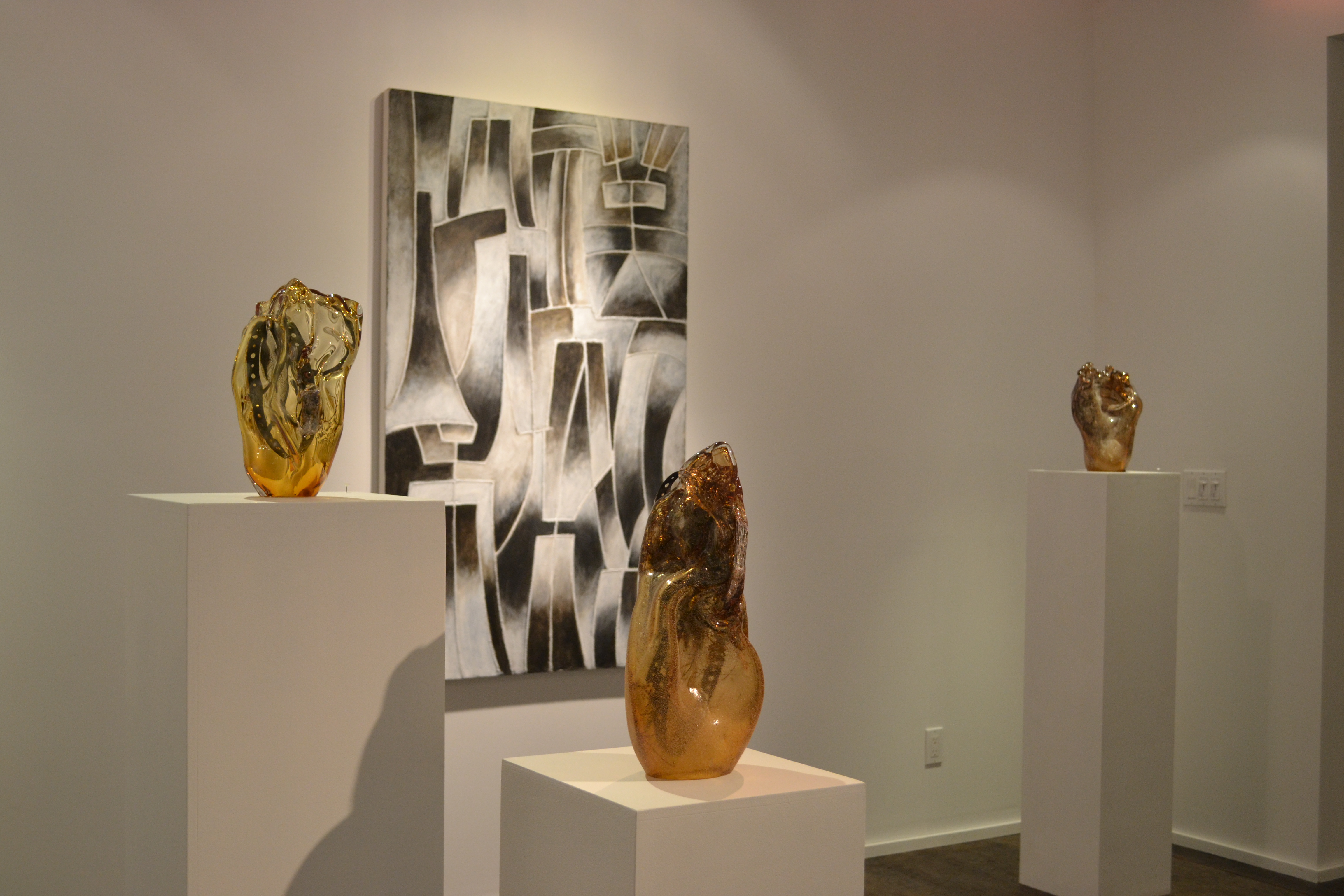
Marianne Weil's blown glass sculptures with a painting by Debbie Ma in the four-person show at Art Sites.
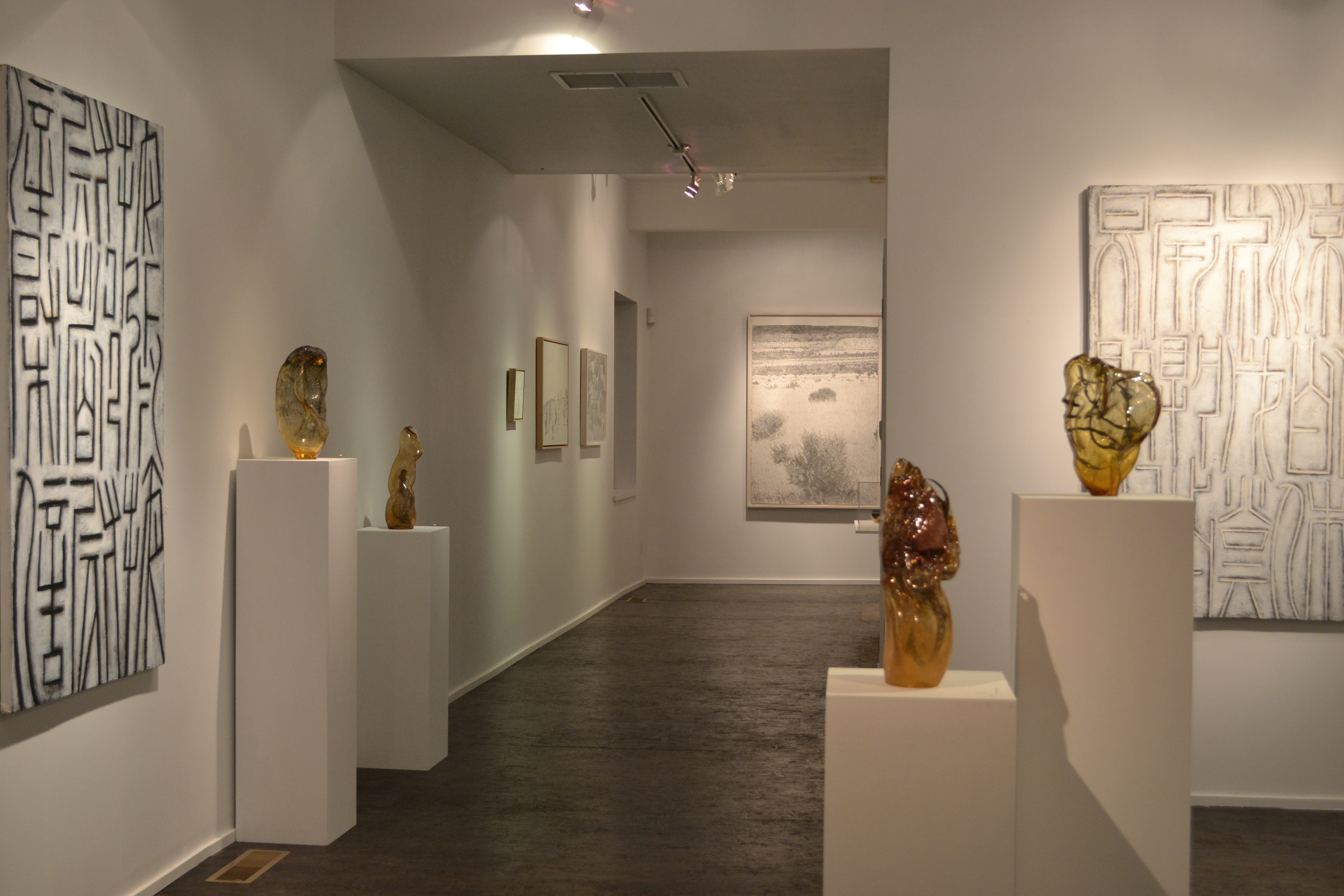
A view of the four person show at Art Sites. The photo includes sculpture by Marianne Weil, paintings by Debbie Ma and drawings on canvas by Mel Pekarsky. Not shown is printmaking by Ellen Wiener.
.
BASIC FACTS: Blown glass mixed media sculptures by Marianne Weil were recently exhibited in the show, "Debbie Ma / Mel Pekarsky / Marianne Weil / Ellen Wiener" at Art Sites in Riverhead from Sept 17 to Nov 13, 2011. Some works by Weil remain on view. www.artsitesgallery.com
Marianne Weil's work has been exhibited in France, England, Italy, Switzerland, Spain, Denmark and the United States. She's currently represented by Kouros Gallery in New York City and Art Sites in Riverhead. Museum credits include Sculpture Center, Parrish Art Museum, Heckscher Museum of Art, The Museum at FIT, the Islip Art Museum and more.
Weil is an assistant professor of sculpture at the College of Staten Island of The City University of New York (CUNY). She has a studio in Orient, NY.
For more art and information, visit www.marianneweil.com.
________________________________________
© 2011 Pat Rogers and Hamptons Art Hub. All rights reserved.

The recent exhibit at Art Sites of Marianne Weil’s new glass pieces was really wonderful. The blown glass work is a lovely addition to the bronze she is known for, and a happy blending of the mediums. Weil’s work always speaks for itself, and has a lot to say.
Three earlier bronze sculptures from a private collection are on view at The Sirens’ Song Gallery in Greenport.